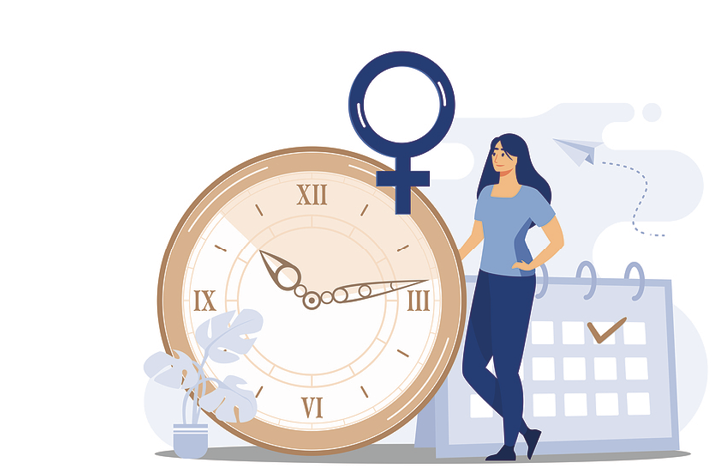Steps on Life’s Path
According to Benjamin Franklin, “In this world, nothing can be said to be certain, except death and taxes.” Sorry, Ben, but we need to add a couple of certainties to that list. Most folks will definitely have to make decisions about birth control, and half of all people are guaranteed to go through menopause.
Birth Control Basics
Also called contraception or family planning, birth control refers to different ways of preventing pregnancy. There are many methods from which to choose, and it can get confusing. You doctor can help you decide what would work best, and in most cases, whichever method you choose can be started or prescribed right in the exam room.
- Emergency contraception reduces the chances of pregnancy after unprotected sex or if other methods fail. It can’t end an existing pregnancy – it can only prevent a pregnancy from happening.
- Hormonal contraception includes short- and long-term reversible contraceptive methods. These prevent ovulation and cause other bodily changes that decrease the chances of pregnancy.
- Non-Hormonal contraception either create a physical barrier between sperm and egg, change the chemistry of the reproductive tract, or a combination of both.
- Other methods rely on tracking observations about a woman’s body and menstrual cycle or behavioral practices. They may somewhat reduce the likelihood of pregnancy, but they can’t be defined as contraception.
Birth Control Truths
There are lots of myths about birth control. Here are a few truths:
- Birth control won’t impact your ability to have children later. Birth control doesn’t impact fertility, but sexually transmitted infections sure can! Doubling up (using both condoms and another method) helps prevent both pregnancy and STIs.
- IUDs can be used whether you’ve had children or not. In fact, they can be a great choice for young people because they’re very effective, long-lasting (up to 10 years), and completely reversible.
- Birth control is not linked to cancer in any way. Actually, some options reduce the risk of ovarian and uterine cancer.
Mechanisms and Management of Menopause
For everyone that can become pregnant, there eventually comes a point when birth control is no longer needed to prevent pregnancy, and menopause is the signal that time has begun. It isn’t a disease or disorder; it’s just one of the many transitions that are part of life. Technically, menopause happens 12 months after someone’s last period. In the U.S., the average age for menopause is 52, but it can be later or earlier. Perimenopause (also called the “menopausal transition”) often begins between the ages of 45 and 55. During this time, the amount of hormones produced by the ovaries starts to fluctuate, causing the symptoms of approaching menopause to fluctuate too. One of the first signs may be irregular periods. Contact your health care provider if your periods happen very close together, are very heavy, last more than a week, or resume after being gone for more than a year. If you don’t want to become pregnant, it’s important to continue using birth control during perimenopause. Ovulation may be irregular during this time, but it’s still happening—there’s just no predicting when it will occur.
Management
Some people don’t notice very many menopausal symptoms, while other people struggle with them. Here are tips that will help with common symptoms such as trouble sleeping, weight gain, depression, and more:
- Keep moving—Physical activity can help even out many of the bumps on the road through the menopause transition. It helps maintain muscle mass, strengthens bones, boosts mood, reduces the risk of cancer and other diseases, and helps prevent weight gain. Increasing abdominal fat can be especially troublesome during this time, but physical activity can help.
- Fuel wisely—Aim for a Mediterranean-style diet: vegetables, fruit, legumes, whole grains, olive oil, nuts and seeds, herbs and spices, some fish and seafood, moderate amounts of dairy or dairy replacements, and a limited amount of (or even no) meat. This type of diet provides plenty of protein to preserve muscle mass, healthy fats, bone-building calcium, complex carbohydrates, and fiber to keep your gut microbiome happy.
- Remember—You don’t have to go this alone. Talk to your health care provider for suggestions and support.
This is a condensed version of the Sawtooth Mountain Clinic’s “Topic of the Month” newsletter. Check out the full article on our website (sawtoothmountainclinic.org) to learn more about the different types of contraception, more tips for managing the symptoms of menopause, and to access all the sources cited.




